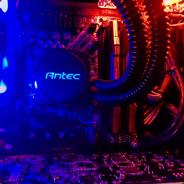15" HP ZBook 15 G2 + 750Ti@16Gbps-TB2 (AKiTiO Thunder2) + Win8.1 [Yukikaze]
-
Similar Content
-
Thunderbolt/Mini displayport requires a VGA connection to work???
By juquinha,
- thunderbolt
- vga
- (and 3 more)
- 5 replies
- 3244 views
-
- 2 replies
- 1801 views
-
- 0 replies
- 2184 views
-
- 1 reply
- 3061 views
-
- 0 replies
- 1696 views
-



Recommended Posts
Join the conversation
You can post now and register later. If you have an account, sign in now to post with your account.